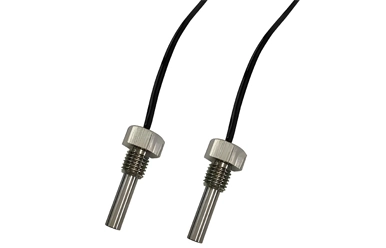A proximity sensor is a type of sensor that detects the presence or absence of objects by using electromagnetic fields, light, or sound. There are different types of proximity sensors, each suited for specific application scenarios.
Inductive Proximity Sensor
The inductive proximity sensor operates based on electromagnetic fields and can only detect metallic targets. When a metal object enters the electromagnetic field, its inductive properties alter the characteristics of the magnetic field, signaling the presence of the metal target to the sensor. Depending on the degree of metal's inductance, the sensor can detect targets at longer or shorter distances.
Capacitive Proximity Sensor
The capacitive proximity sensor can detect metal and non-metal targets in powder, granular, liquid, or solid forms. Combined with its sensitivity to non-ferrous metal materials, it is especially suitable for applications such as glass monitoring, liquid level detection in tanks, and powder or liquid level identification in hoppers.
Photoelectric Proximity Sensor
The photoelectric proximity sensor is versatile and can detect targets as small as 1 millimeter in diameter or up to 60 mm away. The most reliable type is the through-beam sensor, where the emitter and receiver are housed separately, providing a constant light beam. Detection occurs when an object interrupts the light beam between them.
Ultrasonic Proximity Sensor
Ultrasonic proximity sensors are widely used in many automated manufacturing processes. They utilize sound waves to detect objects, making them unaffected by color or transparency. This feature makes them ideal for applications such as remote detection of transparent glass and plastics, distance measurement, continuous liquid and particulate level control, and stacking of paper, sheet metal, and wood.
BST's metal proximity sensor uses a reed switch design with housings made of brass, stainless steel, or aluminum. These metal housings are extremely robust and capable of operating in harsh environments. Additionally, BST's metal proximity sensors perform reliably in extreme temperatures, operating within a range of -10°C to 70°C, making them an ideal choice for industrial automation, outdoor monitoring systems, and more.
The metal proximity sensor housing is typically made from brass, stainless steel, or aluminum, making it suitable for harsh environment applications.
Flanged mounting housings with screw holes allow for easy installation.
Metal proximity sensor is designed as explosion-proof models for special applications and is certified to EEXD CT6 standards.
